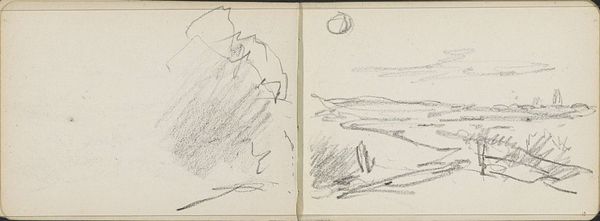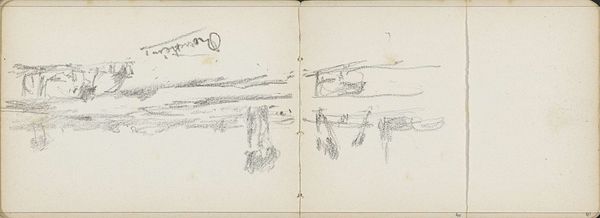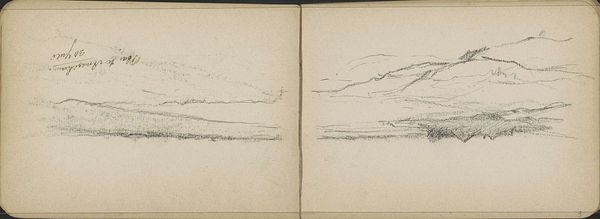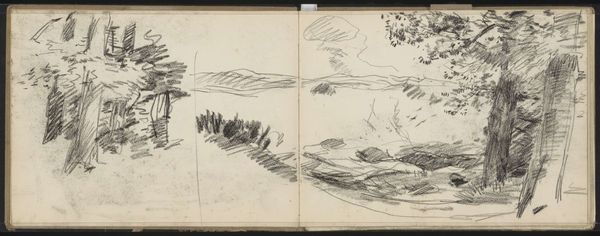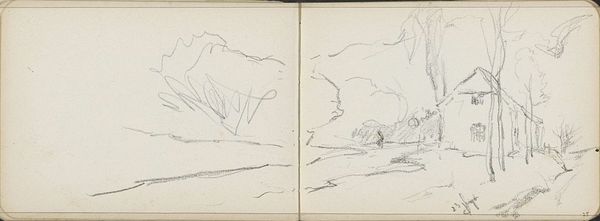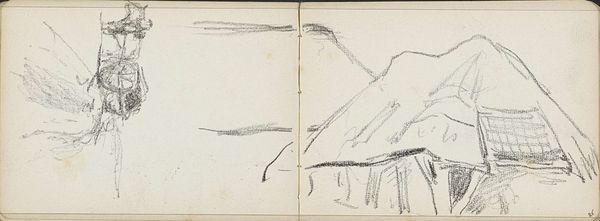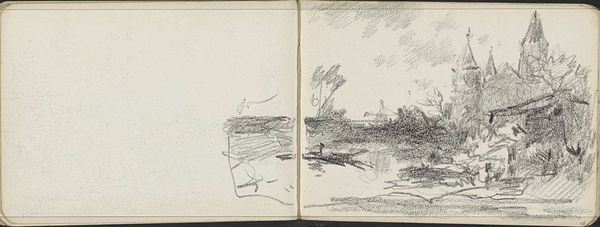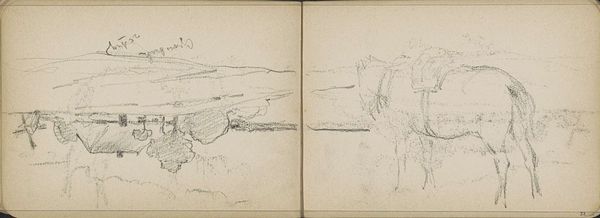
drawing, pencil
#
drawing
#
landscape
#
pencil
#
realism
Copyright: Rijks Museum: Open Domain
Curator: Here we have a delicate pencil drawing titled "Landschap," or "Landscape" in Dutch, attributed to Willem Cornelis Rip, likely created sometime between 1866 and 1922. Editor: My initial reaction is… simplicity itself. Raw, even. The scene evokes a feeling of openness, maybe even a quiet loneliness. Curator: That openness strikes me too. Rip's commitment to realism really shines here. Notice the horizontal lines; they guide your eye and give a very definite structure, almost like a stage. Editor: But a sparsely populated one. I wonder, what are we *not* seeing here? Considering the social and political currents churning during that period – labor movements, rising nationalism – is this emptiness a commentary on the rural displacement? Are we looking at the prelude to industrialization and its impact? Curator: Perhaps. Or maybe it’s a reflection of the artist’s personal emotional state. Look at the marks, how sketchy they are. Did Rip find peace, or only stark simplicity, in the face of the changing times? Is it about the land itself, unburdened by human narratives? Editor: Both can coexist, I think. The land absorbs everything, the personal and the political. Its neutrality is its power. It provides the stage for our dramas and then outlives them. This piece almost whispers about that endurance, about power. Curator: The economy of line is amazing here. Just enough information is given to suggest the scene but without feeling cluttered or busy. The sketchiness feels vulnerable and immediate. Editor: It’s a paradox, isn't it? This starkness can be both beautiful and unsettling. I’m left thinking about what’s been erased, what histories are not visible in this "simple" landscape. Curator: For me, it’s that contrast that's so striking. A deceptively straightforward image hinting at so much beneath the surface, demanding, inviting perhaps, further interpretation. Editor: A reminder that landscapes, like history, are never neutral. They’re palimpsests, layered with stories we must constantly excavate and question.
Comments
No comments
Be the first to comment and join the conversation on the ultimate creative platform.
